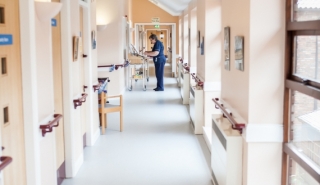Laboratory Medicine
Test Directory / Urate
Urate
Brown clotted serum, gel barrier or lithium heparin
| Test | Urate |
|---|---|
| Common Abbreviations | URA |
| Profile | NA |
| Tube type | Brown clotted serum, gel barrier or lithium heparin |
| Clinical Indication | Hyperuricaemia is divided into primary and secondary classifications, involving over production or reduced elimination. Gout is the most common example of primary hyperuricaemia. Secondary hyperuricaemia is associated with many conditions, for example, psoriasis, starvation and chemotherapy. Hypouricaemia may result from decreased uric acid production, for example allopurinol therapy (a drug used to treat gout) and some hereditary purine metabolism diseases. Hypouricaemia may also be due to decreased renal uric acid excretion, which may occur in AIDS, Fanconi syndrome and severe burns. Quantitation of urinary uric acid excretion may assist in the selection of appropriate treatment for hyperuricaemia. |
| Specimen Type | Blood |
| Sample type | Serum or plasma |
| Minimum Volume | 0.5mL If requesting more than 10 tests please send an additional brown clotted serum sample. |
| Special Precautions | No special requirements |
| Stability | 4 days at 15-25°C and 5 days at 2-8°C |
| Turnaround Time | Urgent: 2 hours Inpatient: 4 hours Outpatient/ GP: 24 hours |
| Laboratory | York and Scarborough |
| Reference Interval | Male: 200-430 umol/L Female: 140-360 umol/L (Recommended by the Pathology Harmonisation Reference Group) |
| Limitations | Dicynone / Etamsylate, Methimazole, N-Acetyl Cysteine and Calcium dobesilate may cause falsely low results. In very rare cases gammopathy, especially IgM (Waldenstöms macroglobulinaemia), may cause unreliable results. |
| Notes |






